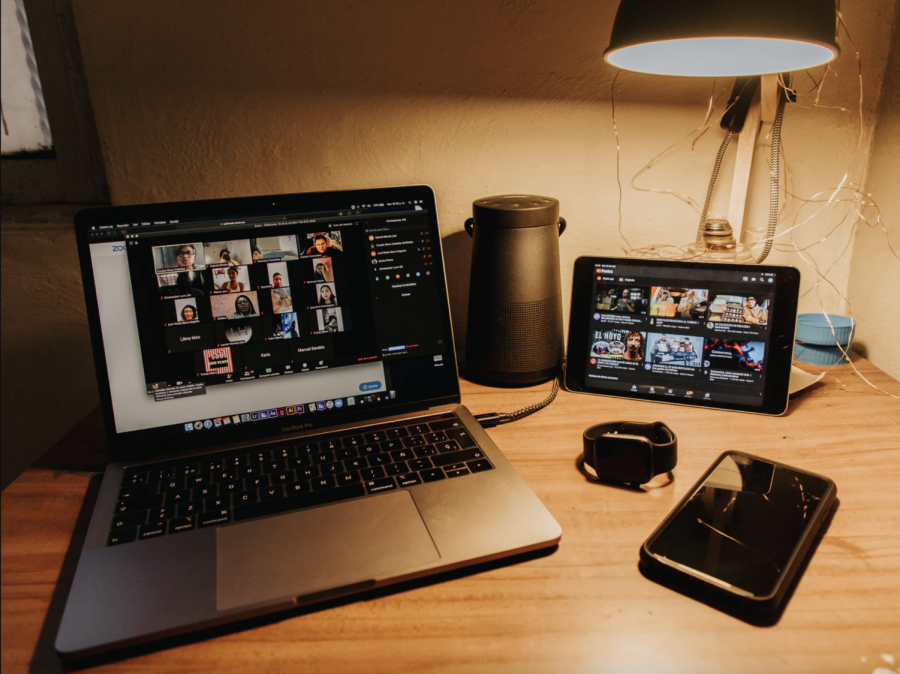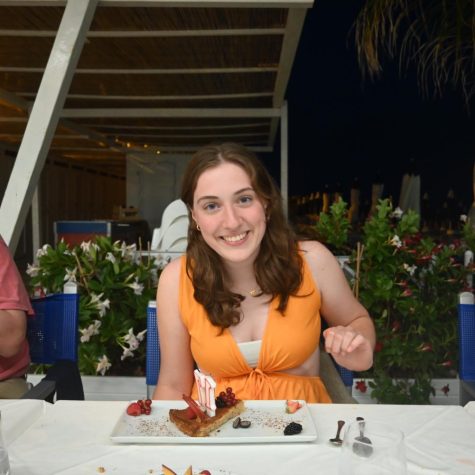Column: looking through the eyes of high school students around the world
Lots of schools across the globe, including WCHS, have decided to make school virtual, in order to protect the students and educators.
October 21, 2020
When I started out with the idea to talk to students around the world, in public and private schools, about their experiences as students during COVID-19, I am not sure what I expected. I guess I thought that most people’s experiences would be somewhat similar to my own. As I write this, I recognize how ignorant it was for me to feel this way.
Now, looking over the interviews, I see that everybody’s experience with school during COVID-19 has not been the same. Granted, I have not done a major research project, but I did not expect to learn that a private school in Washington, D.C. is breaking down walls between classrooms to create larger spaces, or that students in a school in Italy do not have to wear masks when they sit at their desks.
Some students have not always been at WCHS. Sophomore Jonathan Bensoul recently relocated from Orange County, Calif and his previous school didn’t put as much emphasis on academics in the spring. This is in contrast to WCHS, which he feels has been more academically challenging to make sure that students are not overwhelmed when schools open back up.
“WCHS is more prepared for stuff like this and gives a heavier workload, helping students to get back into the rhythm of school,” Bensoul said.
Last year, Orange County Public Schools decided to suspend in-person classes until COVID-19 cases decreased. Fast forward six months or so in the Washington, D.C. metro area where The Field School’s main priority is bringing students back to school.
“My school has knocked down a lot of walls to make classrooms bigger and also fixed the ventilation systems to accommodate more kids in a safer environment,” said Brooke Goldberg, a sophomore at The Field School.
Dealing with this pandemic has pushed many people to think creatively about their home and office spaces. I am one of those people who has made changes to improve my work/personal space. With my desk and bed in the same room, I began to feel as if the walls were closing in on me, so I decided to move my desk into my eldest sister’s room (which is unoccupied, since she is at college). Now I call it my makeshift office and I feel less claustrophobic! Lots of students and teachers are adapting to more time at home, which now doubles as their office and their classroom.
WCHS junior Ava Vorabhanda wishes that we could go back to school, but understands the urgency to stay at home and continue virtual learning.
“I feel like people keep saying ‘You are going off to college. Where do you want to go? What do you want to do?’ This reminds me that high school is almost finished, and so I want to spend time making memories and enjoying being home while I can,” Vorabhanda said. “However, obviously now what I can do with people is really limited, which is a bummer since next year is my senior year.”
Even so, some students are back in the classroom full time. Take, for example, high schooler Jade Ghiaroni, a student at a public school in a suburban London borough called Barnet. Ghiaroni rides London’s famous double-decker bus to get to school by 8:45 a.m.
“I got to choose if I wanted to wear a mask to school in the beginning of COVID-19,” Ghiaroni said. “However, a few days ago [before this interview], my school told us that we have to wear them since cases in London have risen. My school has not yet fully enforced the rule, and as of now we have to wear masks in the hallways, but we don’t have to wear them in the classrooms.”
Maybe it is just me, but whenever I see a movie or tv show where people are touching these days, I flinch and think to myself “Hello, please move to be six-feet apart!” Learning that other countries are returning to school full-time makes me feel weirdly uncomfortable. Why is her school open and my school closed?
It is interesting that some students who live in countries that got hit badly in the spring with COVID-19 cases seem to be the most laissez-faire about COVID-19 now. Maybe these countries are ruled by a kakistocracy (the least suitable government), but I do not think that is the case.
“Last spring, we all did virtual school since we were in a complete lockdown. For me personally it was not too good because learning felt so distant that I couldn’t really follow the class,” Clarice Medici, a 17-year-old student living in the Italian region of Calabria, said. “This year, my particular school started with normal lessons. This happened because my school is very small. My whole high school is around 100 kids.”
Italy and France were among the countries where citizens were not allowed to leave their homes without a permission note. It gives me hope that countries who did not allow their citizens to go outside are now letting students take off their masks as soon as they sit down in the classroom.
We will not know for a long time whose reaction was better, or which high schools did a better job preparing. All I can say is that the whole world is desperately trying to reach – hindsight is 2020.



